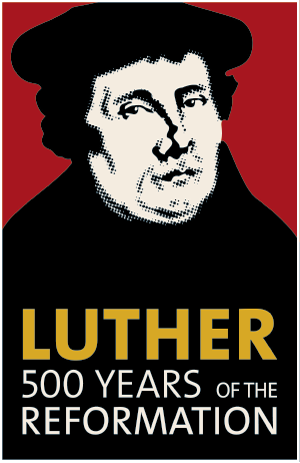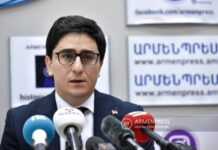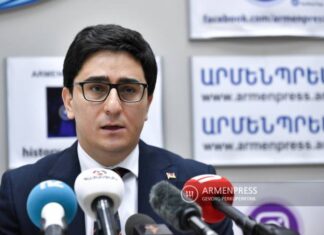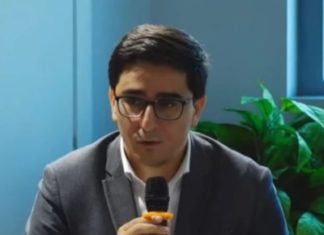By Muriel Mirak-Weissbach
Special to the Mirror-Spectator
BOCHUM-LINDEN, Germany — This year 2017 Germans celebrated the 500th anniversary of the beginning of the Protestant Reformation. Dubbed as “Luther Year,” it hosted hundreds of commemorative events, lectures, special church services, festivities, concerts and exhibitions throughout the country.
Few would have thought that “Armenia in Luther Year” could have been among the celebrations. And yet, on November 11, the Evangelical Church in Bochum-Linden hosted just such a festive gathering. Together with the Armenisch-Akademischer Verein 1860 e.V., the oldest Armenian association in Germany, the Church of Christ parish presented a program of lectures and music. Pastor Rolf Schuld, who coined the title, spoke of the connection between two themes that are very close to his heart. In his welcoming remarks, he pointed to the warm relationship his parish has developed with Armenia over many years. Since the construction of the bronze sculpture, “Ode to Peace – Pulsar” by artist Albert Vardanyan in 2006, this Protestant parish feels so closely bound to Armenia that, especially over the past years, various concerts, exhibitions and other events commemorating April 24 have taken place in the community center, in cooperation with the AAV. And the parish is also known in Armenia: outside the Berlin Art Hotel in Gyumri, which hosts artistic activities, one can admire the same statue representing “Pulsar” – an ode to peace. Sculptor Vardanyan comes from Gyumri.
Luther in Mesrob’s Footsteps…
The intimate links between Armenia and Luther reach back centuries, as Prof. Armenuhi Drost-Abarjan illustrated in a wonderful address titled, “Invention of the Armenian Alphabet and Bible Translations in the Mother Tongue in the 5th century.”










